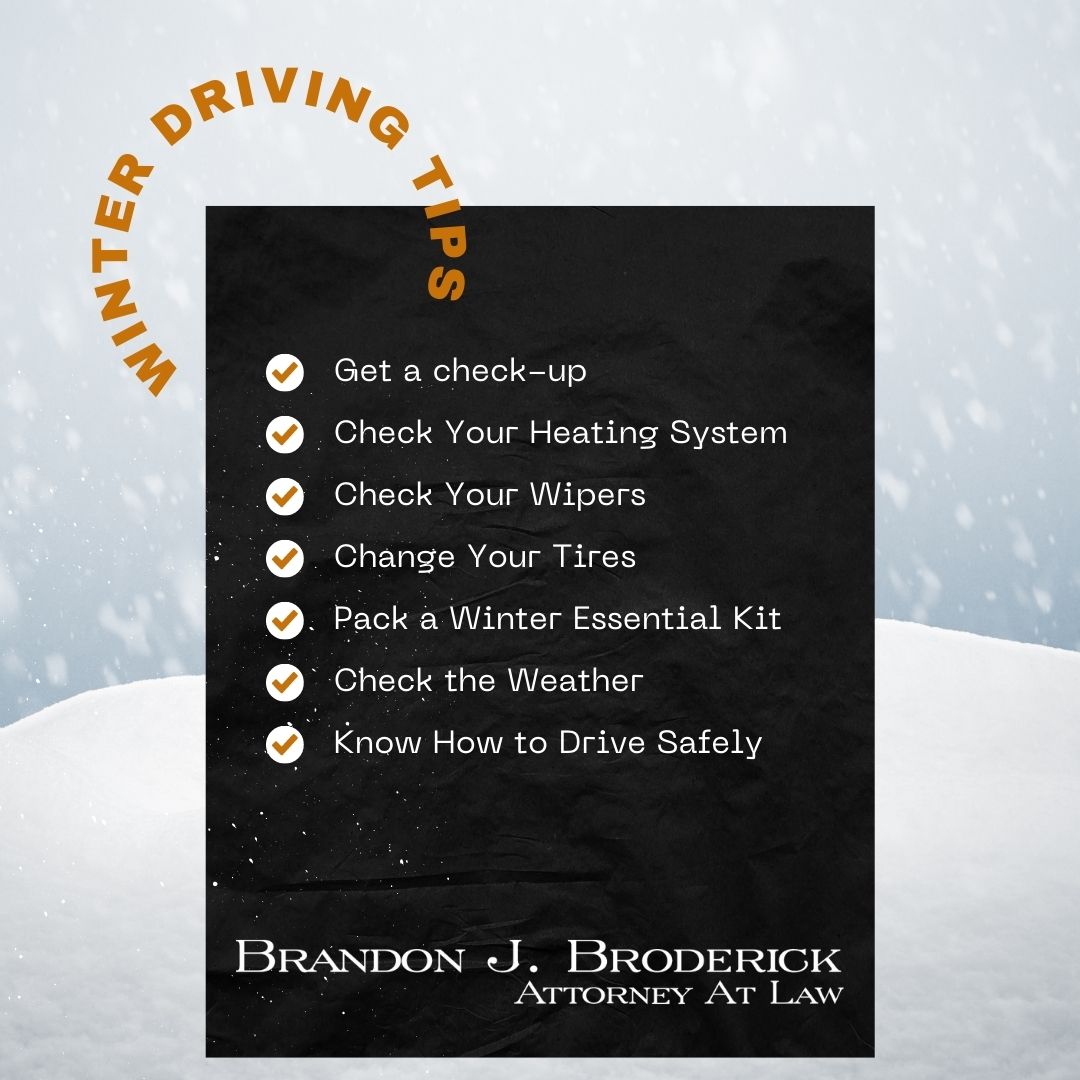Winter is here, and that means it is time to ensure your vehicle is ready to handle the sleet, snow, and harsh weather that’s soon to come. Winter driving has its challenges, but if you take a few precautions, you have a better chance of staying safe, wherever you go. Follow these steps to prepare for winter driving.

1. Get a Check-Up
Before winter rolls around, it’s worth taking your car for a checkup. That way, you can detect potential issues before they become worse and pose a safety hazard. Bringing your vehicle to a mechanic for a quick tuneup will only take a few hours, and it can save your life or prevent your car from breaking down in the middle of a blizzard.
Before you start driving in winter weather, you need to ensure your brakes are working correctly. Your exhaust system should not have any leaks. Your battery power may drop when it gets cold, so it’s worth installing a new one if yours is old.
While those are some of the most important things to check, you should also ensure your hoses and belts are working as intended, with no fluid leaks. A good mechanic will detect issues you may not notice yourself.
2. Check Your Heating System
Your heating system is integral to keeping you safe on cold days. It will prevent frostbite and help you stay focused on the road. Make sure your heating systems and defrosters are working properly, and fill up on antifreeze.
3. Check Your Windshield Wipers
Similarly, make sure you have enough antifreeze for your windshield wipers. If they are old, they may not be able to clear off the snow from your windshield. As that can lead to hindered visibility, which can be dangerous, it’s worth replacing them with stronger, newer ones.
4. Clean Your Mirrors
Before driving, always clean your mirrors. Scrape off snow and ice, so you can always see what is going on behind you. Do the same for your side and back windows.
If you have a rearview camera, make sure it is not covered by snow or ice before heading out. It’s easy to forget to do that, especially if you don’t need to back out of your driveway when going to work in the morning, but it may become important later on during the drive.
5. Change Your Tires
Before the weather gets bad, check the tread on your tires. If your tires don’t have good tread, you will struggle to get traction in the snow. It’s a good idea to replace your tires if they are old. If you have all-season tires, you should also consider replacing them with winter tires.
Your tire pressure is critical, too. The colder it gets, the more your tire pressure will drop. Low tire pressure can be dangerous, so refill your tires according to the recommendations of your manufacturer.
6. Pack a Winter Essentials Kit
During the winter, especially on longer drives, it’s critical to have a winter safety kit in case your car breaks down during a snowstorm. Here are some things to pack in your kit:
- Band-aids and gauze
- Sterilizing alcohol
- Extra gloves, scarves, and hats
- Some snack bars or canned food
- Extra water bottles
You should also consider keeping a small shovel in your trunk. That will make it easier to get out of sticky situations.
7. Check the Weather
Always check the weather forecast to see if heavy storms are expected. It’s particularly essential to do this before planning long road trips, but you should also do it daily, so you know when there might be a blizzard. That way, you can stock up on essentials beforehand, avoiding the need to venture out in treacherous weather.
If you have a smartphone, download an app like AccuWeather, which will show you the hourly, daily, and monthly forecast. It will also send you alerts when heavy storms are coming your way. If you don’t have a smartphone, listen to the weather updates on your local radio station.
8. Know How to Drive Safely
Safe winter driving is all about following a few essentials. Here are some critical tips that will help you stay out of danger:
- Keep a distance of 10 seconds between you and the car ahead of you to avoid crashes.
- Brake slowly and smoothly instead of slamming down on your brakes, which can cause you to lose traction.
- Look out for ice, including black ice, on the road ahead.
- Stay awake and hydrated, so you can focus.
- Drive slower when it is snowing or if there is ice on the road.
- Turn smoothly and gently.
Final Thoughts
Whether it’s going to be your first time driving in the winter or you’ve done so all your life, the principles of safe winter driving remain the same. Prepare your car and yourself properly, and you will have nothing to worry about.
Injured? The Office of Brandon J. Broderick, New Jersey Car Accident Lawyers, Can Help
If the unfortunate happens and you’ve been injured in a car accident, don’t go it alone. An experienced car accident lawyer can advocate for your best interest and pursue fair compensation for your damages. At Brandon J. Broderick, Attorney at Law, you can count on us to work tirelessly for your quality of life. With our long track record of success, we’ve helped people just like you move forward after sustaining an injury that was caused by another’s negligence. Contact us now for a free legal review.